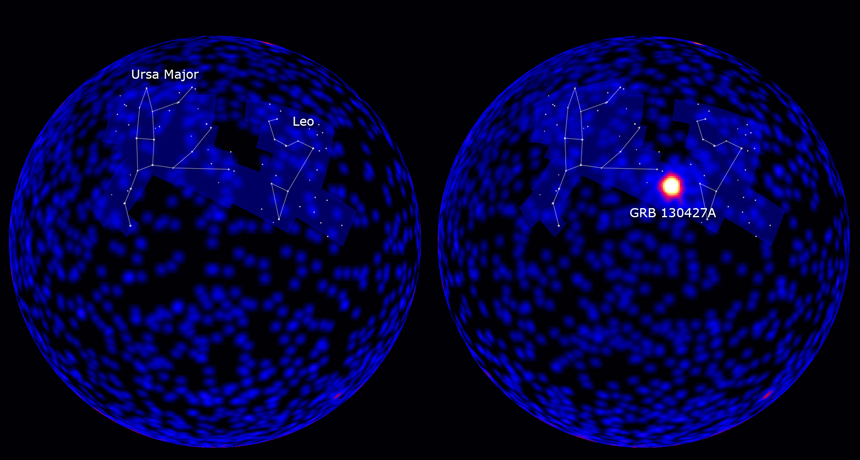Bright gamma-ray burst tests idea of event’s origins

The maps in this animation show how much brighter gamma-ray burst GRB 130427A was relative to the rest of the gamma rays in the sky. The left map shows the sky during a three-hour period prior to the outburst. The right map shows a three-hour period from 2.5 hours before the burst to 30 minutes into the event.
Fermi LAT Collaboration/DOE/NASA







